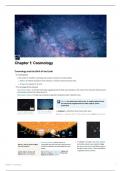Summary
Summary Earth:Portrait of a Planet Chapter 1-8
- Course
- Institution
- Book
* the notes are made in notion, so if you prefer a notion link over pdf send me a message :) * ...............................................................................................................................................................................................................
[Show more]



